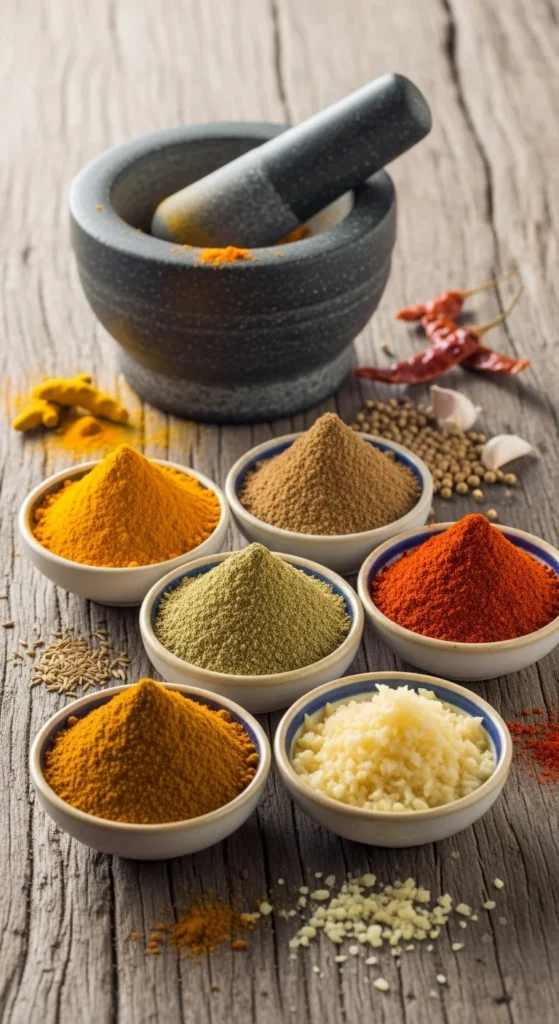
There’s something magical about a homemade curry—the aroma that fills your kitchen, the bold spices dancing together, and that deep, rich flavor that just doesn’t come from a store-bought jar. The secret? Fresh, homemade curry paste.
Making your own curry paste might sound intimidating, but it’s easier than you think. With a few simple ingredients and the right blending technique, you’ll have a fragrant, flavorful base that instantly elevates any dish—from Thai curries to Indian-inspired stews.
Here’s how to make curry paste that tastes fresh, complex, and absolutely unforgettable.
Step 1: Choose Your Curry Type
Before you start, decide what kind of curry you want to make. The ingredients and spice levels vary depending on the style:
- Thai Red Curry Paste: Spicy and aromatic, made with red chilies, lemongrass, and galangal.
- Thai Green Curry Paste: Fresh and herbaceous, featuring green chilies, basil, and lime zest.
- Indian Curry Paste: Warm and earthy, with spices like cumin, coriander, turmeric, and ginger.
Each version has its own personality, but the process of making them is almost identical—blend fresh ingredients with dry spices until smooth and fragrant.
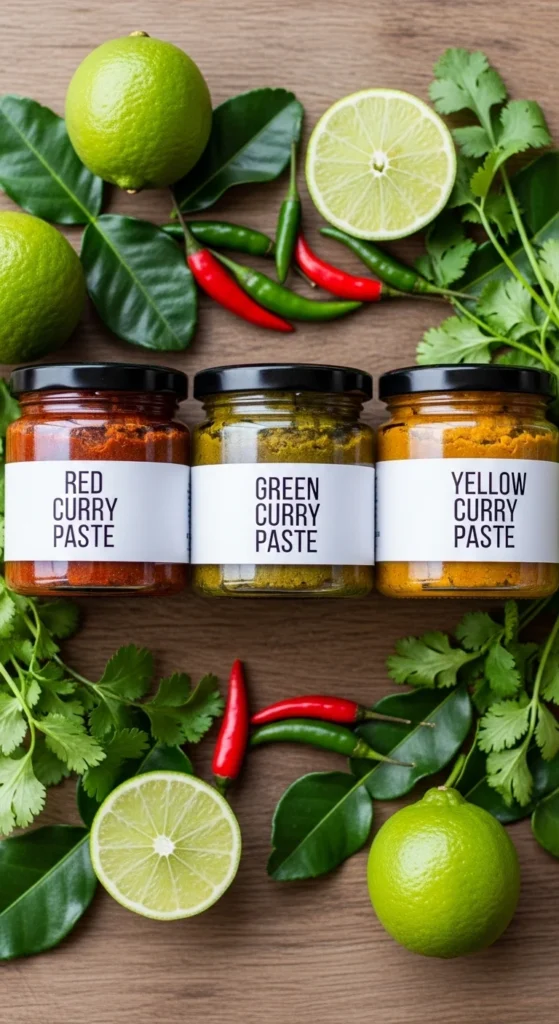
Step 2: Gather the Core Ingredients
Homemade curry paste gets its power from aromatics, spices, and a touch of acidity. Most versions start with a few universal staples:
Base Ingredients
- 1–2 shallots (or a small onion)
- 4–5 cloves garlic
- 1–2 inches fresh ginger or galangal
- 1–2 lemongrass stalks (white parts only)
- 2–3 fresh chilies (adjust heat to your taste)
Flavor Boosters
- 1 tsp ground cumin
- 1 tsp ground coriander
- ½ tsp turmeric powder
- 1 tbsp fish sauce or soy sauce
- 1 tbsp lime juice or rice vinegar
- 1–2 tbsp oil (for blending)
Feel free to adjust quantities depending on your spice preference and the kind of curry you’re after.
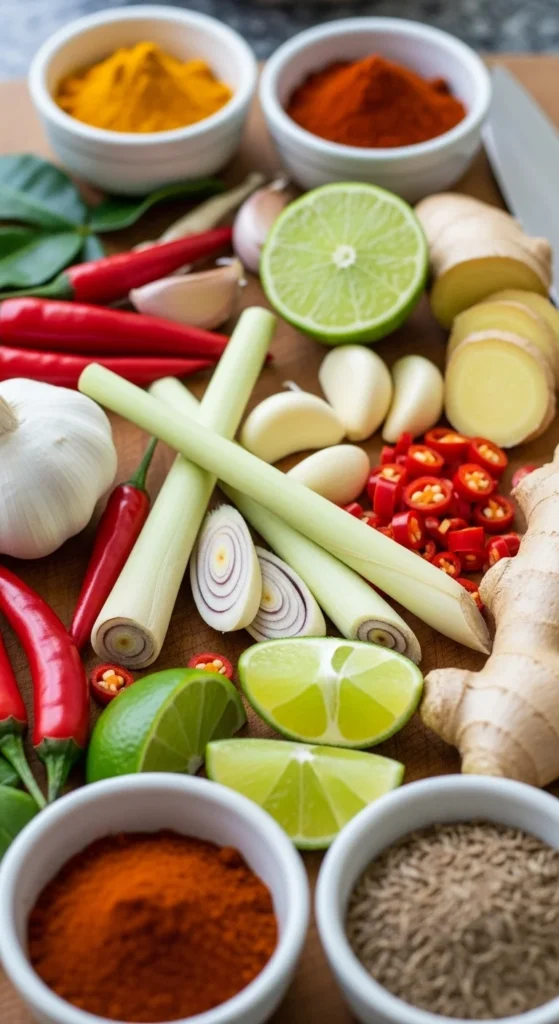
Step 3: Toast the Spices
To get that deep, smoky flavor that defines a good curry paste, toast your spices first.
- Heat a dry skillet over medium-low heat.
- Add your dry spices—like cumin, coriander, and turmeric.
- Stir constantly for 1–2 minutes until fragrant (don’t let them burn).
- Remove from heat and let them cool slightly.
Toasting awakens the oils in the spices, giving your curry paste a warm, roasted depth that pre-ground spices alone can’t match.

Step 4: Blend It All Together
Once your ingredients are prepped, it’s time to bring them together. You can use a food processor, blender, or traditional mortar and pestle (for the most authentic flavor).
Method:
- Add all ingredients—fresh aromatics, toasted spices, and a splash of oil—into your blender or mortar.
- Blend or pound until you get a smooth, thick paste.
- If it’s too dry, add a teaspoon of water or coconut milk at a time until it blends smoothly.
You’ll know it’s perfect when the paste looks glossy, smells bold, and sticks together like a thick spread.
Pro tip: Making it by hand with a mortar and pestle gives a chunkier texture and deeper aroma—but a blender works just as well when you’re short on time.
Step 5: Cook and Store Your Curry Paste
Your homemade curry paste is now ready to use! But before you toss it into a dish, “wake it up” by cooking it in a bit of oil.
To cook:
- Heat 1–2 tablespoons of oil in a pan.
- Add 2–3 tablespoons of curry paste (depending on how strong you want the flavor).
- Sauté for 1–2 minutes until fragrant—this helps release the essential oils.
From there, add coconut milk, broth, or tomatoes depending on your recipe.
To store:
- Refrigerator: Up to 1 week in an airtight jar.
- Freezer: Up to 3 months. Freeze in ice cube trays for easy single-use portions.
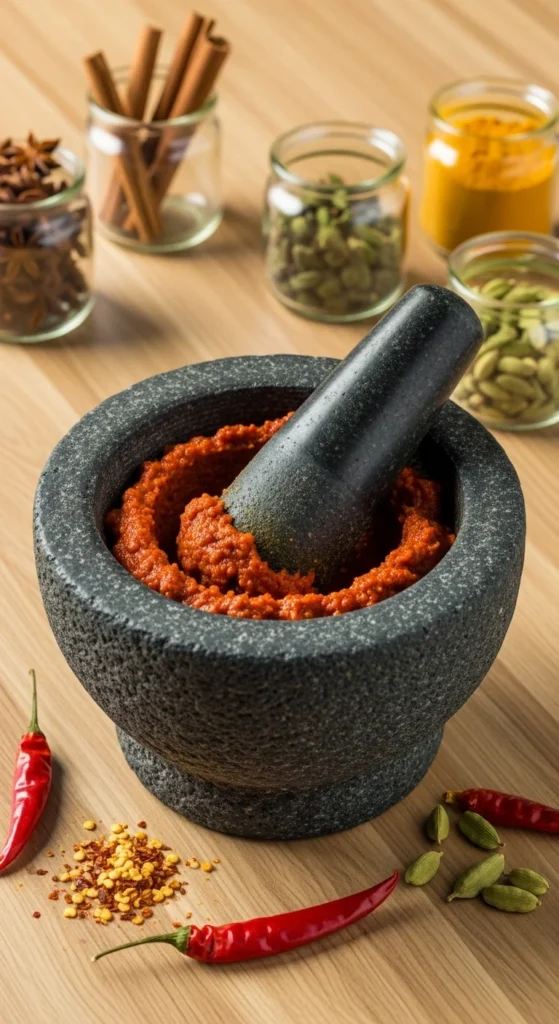
Step 6: Customize and Experiment
Once you’ve mastered the base recipe, play with your flavors. Homemade curry paste is endlessly customizable. Try adding:
- Cashews or peanuts for creaminess.
- Kaffir lime leaves for citrusy depth.
- Fresh herbs like cilantro or Thai basil for brightness.
- Smoked paprika or chili flakes for extra heat and color.
The beauty of homemade paste is that you control the intensity—bold, spicy, or mild—it’s your flavor adventure.
Step 7: Use It in Everything
Don’t limit your curry paste to curries! It’s an all-purpose flavor booster. Use it to:
- Marinate chicken, shrimp, or tofu.
- Stir into soups for instant depth.
- Whisk into salad dressings or dipping sauces.
- Toss with noodles or rice for a quick weeknight meal.
Once you start using it, you’ll find yourself sneaking it into just about everything.
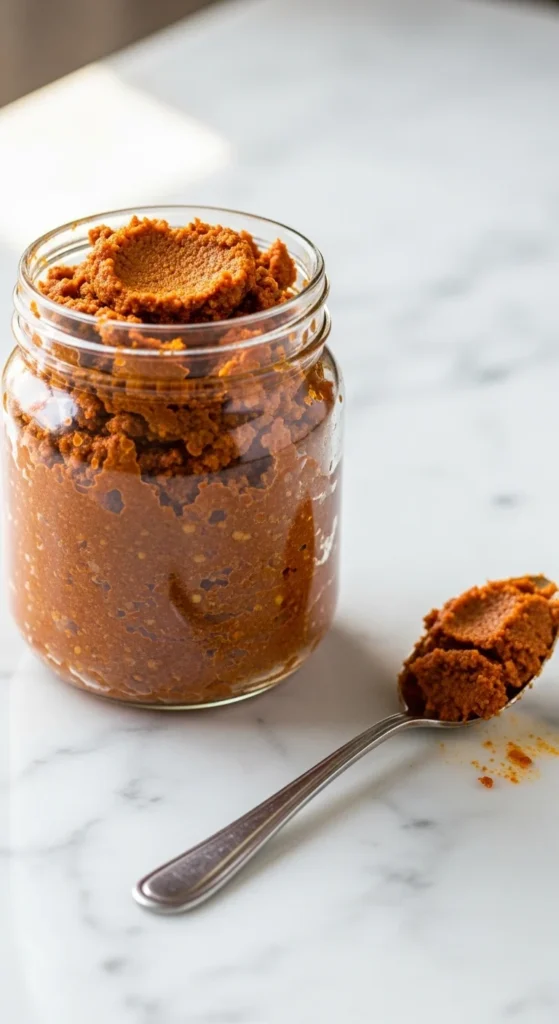
The Flavorful Takeaway
Making your own curry paste is one of those small kitchen projects that pays off big. It’s fresher, more aromatic, and endlessly customizable. Once you’ve tasted the difference, you’ll never go back to the jarred stuff again.
So grab your spices, fire up that blender, and let your kitchen smell like a five-star curry house.



Leave a Reply